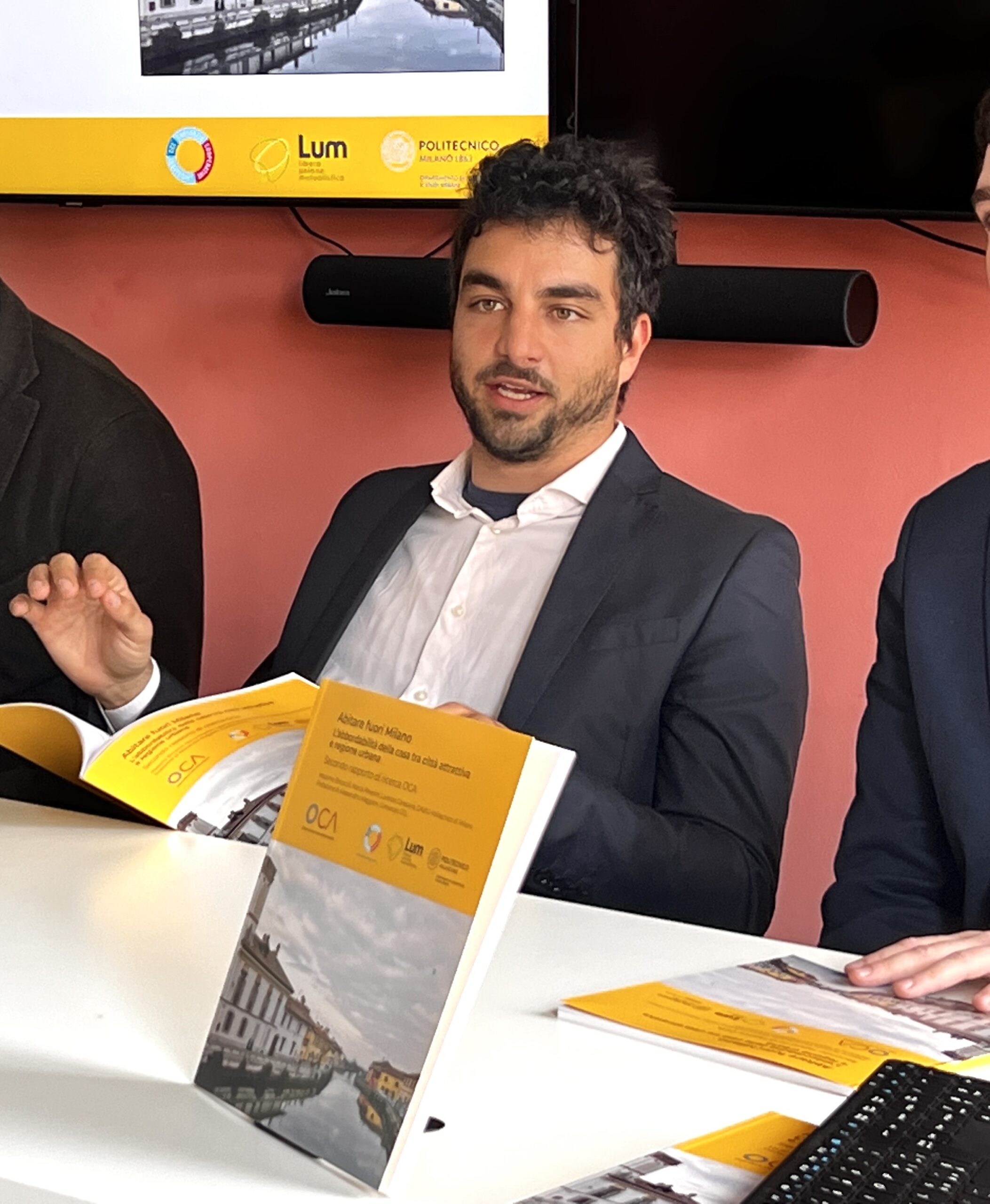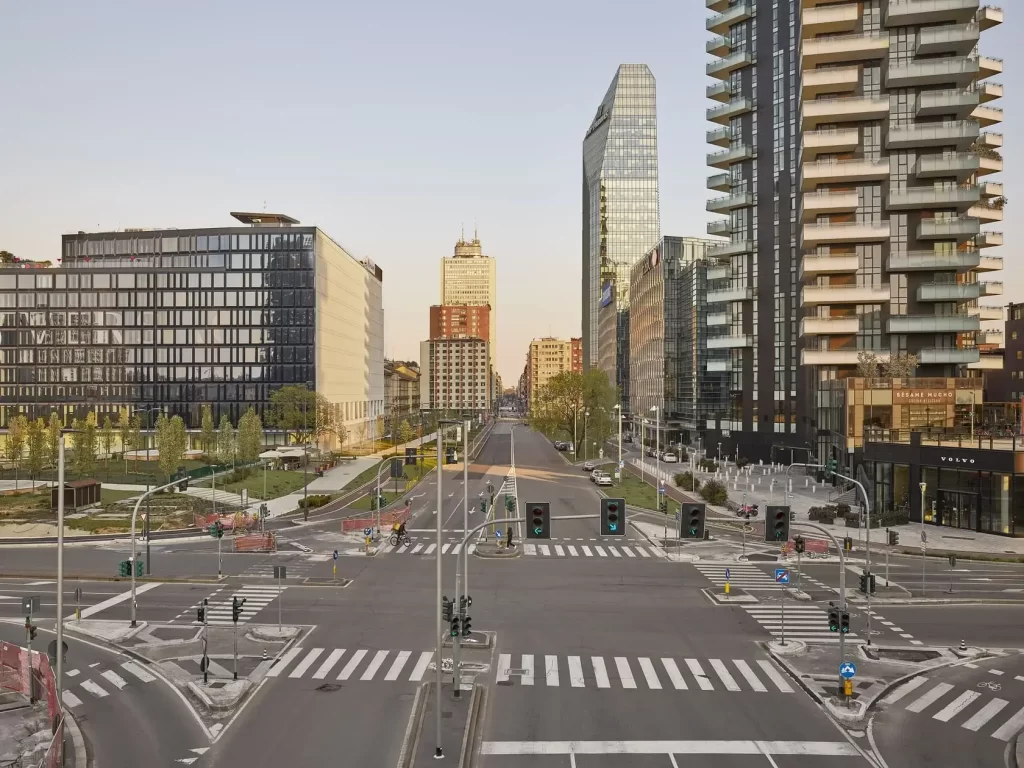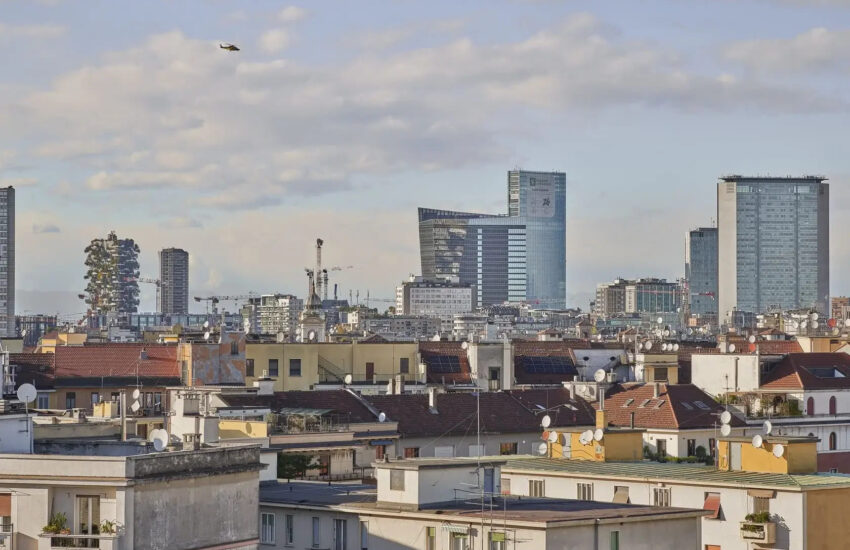How is access to housing evolving in a constantly changing metropolis like Milan? Which areas remain affordable for those on average incomes and under what conditions? What past and present housing policies shape access to homes in Milan and other cities? And how do they connect to issues of inequality and access to the economic and social opportunities of urban life?
These are some of the key questions behind the research of Marco Peverini, RTDA researcher at the Department of Architecture and Urban Studies (DAStU) at Politecnico di Milano and l’Osservatorio Casa Abbordabile – OCA (Affordable Housing Observatory), coordinated by Professor Massimo Bricocoli.
OCA was established following the findings of Marco’s PhD thesis in the Urban Planning, Design and Policy programme at DAStU, published in Promoting Rental Housing Affordability in European Cities (2024, Polimi Springer Brief). The Observatory is supported and funded by the Consorzio Cooperative Lavoratori and Libera Unione Mutualistica in partnership with DAStU. It aims to analyse trends in income and wages, property prices, mobility, and living conditions across Milan and its metropolitan region.
We spoke with Marco Peverini, co-author of the report “Abitare fuori Milano L’abbordabilità della casa tra città attrattiva e regione urbana (2025) and the book “Milano per chi?” (2024, Letteraventidue) about the findings of his research, drawing on data, case studies, and analytical tools to understand how living conditions in Greater Milan are changing, and what this means for spatial planning, mobility, and public policy.

Marco Peverini brings a multidisciplinary approach, grounded in data and regional insight. In this interview, he reflects on the Observatory’s origins, the main outcomes of the second report, and future research directions, including affordability, housing inequalities, and large-scale urban planning.
You are a Politecnico di Milano DAStU researcher focusing on housing and urban transformation. How did your work lead to the creation of the Affordable Housing Observatory? What motivated your interest in these topics?
“While studying Building Engineering and Architecture at the University of Perugia, I developed a strong interest in urban planning and policy. I first explored these themes through my thesis, which focused on analysing intervention policies in vulnerable neighbourhoods within the metropolitan area of Barcelona, under the supervision of Prof. Mariano Sartore (Unipg) and Prof. Francesc Muñoz Ramirez (UAB). This experience led me to apply for a scholarship to pursue a PhD in Urban Planning, Design and Policy at the Department of Architecture and Urban Studies (DAStU).”
I was lucky enough to win a housing scholarship funded by the Consorzio Cooperative Lavoratori (CCL), which allowed me to conduct research independently under the guidance of prof. Massimo Bricocoli, from a unique position bridging academia and housing.
Through the dynamic exchange between these two spheres, shaped by figures such as Massimo Bricocoli, Alessandro Maggioni, Alessandro Galbusera, Claudio Palmerini, and Federica Verona, and informed by my experiences living in various European cities grappling with a deepening housing crisis, my focus began to shift. I moved beyond a narrow interest in housing cooperatives to a broader concern with the social and financial dimensions of housing affordability, particularly the relationship between housing costs and income, which we later translated into Italian as “abbordabilità”. In this wider context, cooperatives are one among many factors. I focused on housing policy in Milan, where public investment has steadily declined in favour of market-driven and finance-led development, even at the cost of widespread privatisation. I contrasted this with Vienna, where there is public control over buildable land and nearly 80 per cent of the housing infrastructure.
Since starting my doctorate in 2018, the housing issue has become increasingly prominent—both internationally and in Milan. In a sense, we were ahead of the curve locally. When I completed my PhD in 2022, we decided to expand the research into a wider project, integrating the Libera Unione Mutualistica cooperative and launching the Affordable Housing Observatory (OCA) (www.oca.milano.it ).”
The second OCA report highlights a stark reality. Even average earners now struggle to find decent housing in Milan. How did this situation arise, and what does the data reveal about the people being driven out of the city today?
“The housing affordability crisis is affecting all major, attractive cities, and Milan is no exception. OCA data show how average wages in the public or private sector are no longer sufficient to secure adequate housing.
Between 2015 and 2023, property prices rose by 58 per cent, while average wages increased by just nine per cent for blue-collar workers and 15 per cent for white-collar workers. This growing imbalance has created a situation where living in Milan is increasingly dependent on pre-existing wealth or financial support from family.
In the absence of strong public policies around social housing and income redistribution, more people, not just the most vulnerable, but the middle class, are being priced out of the city. The danger is that Milan becomes a city that absorbs vast amounts of labour income without providing sustainable living conditions in return.”
Living outside Milan appears to be one of the few remaining options, but it comes with costs and compromises. Based on your data, which areas are accessible, and what are the compromises in terms of transport, time, and quality of life?

“We looked at an area extending roughly 60 km in each direction around Milan, encompassing around 300 municipalities across seven provinces. It’s a highly diverse landscape. Some areas, like Basiglio or Cusago, have high average incomes, while others such as Baranzate or Rozzano, are significantly lower.
The most affordable housing is found in municipalities farthest from the city, where public transport is less reliable. While property prices may be lower, the overall cost of living far from the centre, including rent, commuting, and travel time can consume 50–60 per cent of a net monthly salary.
Beyond the financial strain, there’s the toll of long commutes and reduced access to services, which can lead to a sense of dependency on the central city. In these circumstances, living outside Milan is not a real choice, it’s a necessity that creates new forms of social and financial vulnerability.”
The report calls for a metropolitan vision to address the housing issue effectively. What kind of policies are needed to make areas beyond Milan truly liveable? And who should be responsible for implementing them?
“In 2024, we organised a meeting with over 30 municipalities from the Milan metropolitan region. A shared awareness emerged. Many of these local authorities are experiencing increasing housing pressure as more people are displaced from Milan. Yet, they lack the financial resources and governance tools needed to manage the issue, especially without coordinated action from higher-level institutions.
This results in rising competition for rental housing, increased prices, and added pressure on already stretched local services. What’s needed is an integrated metropolitan policy approach that links housing with mobility and essential services.
The quality of public transport, for example, changes radically the moment you cross Milan’s municipal boundary. Large-scale infrastructure projects, like the extension of metro lines, can be a double-edged sword, improving accessibility but potentially fuelling speculative property dynamics in newly connected areas.
To manage these effects, we need coordinated, supra-municipal policies that equip local administrations with tools to monitor, regulate, and support these transitions. Without them, even the currently accessible areas risk becoming unaffordable soon.”
Looking ahead: what are the Observatory’s priorities for 2025? Are there new case studies in the pipeline? What areas of research would you like to explore further in the coming years?
“In 2025, we are launching a series of qualitative studies in key locations, including municipalities in the metropolitan region such as Rho, Cusano Milanino/Cinisello Balsamo, Rozzano, and Baranzate. We’re working on thematic case studies that examine issues like regulated rental schemes, recruitment-related housing (with a focus on Trenord), and housing agencies.
In parallel, we’re involved in the European Horizon REHOUSIN project, which explores the intersection of ecological transition and housing inequality. The goal is to understand how we can implement energy efficiency upgrades, urban densification, and greening strategies in ways that are socially fair and inclusive.
I’m expanding my research into the area of “regional anti-fragility” and studying how to intervene in complex, multi-vulnerable situations. One example is the Destra Volturno neighbourhood in Castel Volturno, where I’m starting a new research initiative with Andrea Rigon (project coordinator), Danila Saulino, Lorenzo Caresana, and Giacomo Ricchiuto. This work forms part of the activities of the Centro di Competenze per l’Anti-fragilità Territoriale – CRAFT (Centre of Competence for Regional Anti-Fragility). These are areas overlooked by conventional urban planning, yet they compel us to rethink the role and scope of planning today, especially as we face increasingly complex and unpredictable forms of vulnerability.”
“The opening image is by G. Hänninen (2024) and is taken from Osservare e documentare in Bricocoli M., Peverini M., Milano per chi? Se la città attrattiva è sempre meno abbordabile, Siracusa, Letteraventidue, pp. 17–48.”

